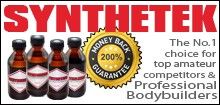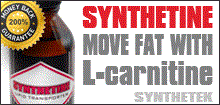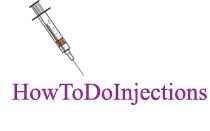You are using an out of date browser. It may not display this or other websites correctly.
You should upgrade or use an alternative browser.
You should upgrade or use an alternative browser.
Niacin and its effects
- Thread starter Macdaddy
- Start date
- Joined
- Jul 8, 2002
- Messages
- 691
I used to use 2g's 30mins before a workout because of the "reported" GH-releasing effects. It gave a strange effect to the skin, made it look really thin so you could almost see down to the fibers, sort of like sandpaper. I don't think it's worth much.
AKA Vitamin B3
Here's some stuff that will answer some of your questions, along with some stuff that you probably don't care about.
Definition
A water-soluble vitamin required by the body for health, growth and reproduction; part of the vitamin B complex.
--------------------------------------------------------------------------------
Alternative names
Diet - niacin; Nicotinic acid
--------------------------------------------------------------------------------
Food Sources
Niacin (also known as vitamin B3) is found in dairy products, poultry, fish, lean meats, nuts, and eggs. Legumes and enriched breads and cereals also supply some niacin.
--------------------------------------------------------------------------------
Functions
Niacin assists in the functioning of the digestive system, skin, and nerves. It is also important for the conversion of food to energy.
--------------------------------------------------------------------------------
Recommendations
Recommended daily allowances (RDAs) are defined as the levels of intake of essential nutrients that the Food and Nutrition Board judges to be adequate to meet the known nutrient needs of most healthy persons.
The best way to get the daily requirement of essential vitamins is to eat a balanced diet that contains a variety of foods from the food guide pyramid.
Specific recommendations for each vitamin depend on age, gender, and other factors (such as pregnancy). The U.S. Department of Agriculture has a PDF file that lists these recommendations.
--------------------------------------------------------------------------------
Side Effects
A deficiency of niacin causes pellagra. The symptoms include inflamed skin, digestive problems, and mental impairment.
Large doses of niacin can cause liver damage, peptic ulcers, and skin rashes. It can be used as a treatment for elevated total cholesterol levels, but should only be used with medical supervision.
*** Want to know more?*** Go here...
http://www.orst.edu/dept/lpi/infocenter/vitamins/niacin/
Here's some stuff that will answer some of your questions, along with some stuff that you probably don't care about.
Definition
A water-soluble vitamin required by the body for health, growth and reproduction; part of the vitamin B complex.
--------------------------------------------------------------------------------
Alternative names
Diet - niacin; Nicotinic acid
--------------------------------------------------------------------------------
Food Sources
Niacin (also known as vitamin B3) is found in dairy products, poultry, fish, lean meats, nuts, and eggs. Legumes and enriched breads and cereals also supply some niacin.
--------------------------------------------------------------------------------
Functions
Niacin assists in the functioning of the digestive system, skin, and nerves. It is also important for the conversion of food to energy.
--------------------------------------------------------------------------------
Recommendations
Recommended daily allowances (RDAs) are defined as the levels of intake of essential nutrients that the Food and Nutrition Board judges to be adequate to meet the known nutrient needs of most healthy persons.
The best way to get the daily requirement of essential vitamins is to eat a balanced diet that contains a variety of foods from the food guide pyramid.
Specific recommendations for each vitamin depend on age, gender, and other factors (such as pregnancy). The U.S. Department of Agriculture has a PDF file that lists these recommendations.
--------------------------------------------------------------------------------
Side Effects
A deficiency of niacin causes pellagra. The symptoms include inflamed skin, digestive problems, and mental impairment.
Large doses of niacin can cause liver damage, peptic ulcers, and skin rashes. It can be used as a treatment for elevated total cholesterol levels, but should only be used with medical supervision.
*** Want to know more?*** Go here...
http://www.orst.edu/dept/lpi/infocenter/vitamins/niacin/
- Joined
- Jun 8, 2002
- Messages
- 40
Has anyone used Niacin before going out on stage?
- Joined
- Jun 5, 2002
- Messages
- 95
Ozmrolympia said:Has anyone used Niacin before going out on stage?
If you want to try that get the flush-free niacin. But I love the flush effect, looks like sunburn, lol.
- Joined
- Jun 9, 2002
- Messages
- 2,316
Everyone around me uses it before going on stage. Makes skin look like its going to pop off if you react right to it. Most everyone does. However if you get the 500mg caps beware, you skin will feel like it's trying to melt off, you'll get really red, and your hot almost like a small dose of DNP. Have Fun
- Joined
- Jun 9, 2002
- Messages
- 2,316
Also, it's good for flushing the skin to help clear up mild breakouts
- Joined
- Jul 8, 2002
- Messages
- 691
Macdaddy said:Hmmm, I've got the 500mg caps. How many should I take for how long to get a vascular look?
Macdaddy
Start with 2, I used to use 4-5 30minutes before training. The effects wear off after about 45minutes.
- Joined
- Jul 8, 2002
- Messages
- 691
A while back there was some study (which I never saw, come to think of it) that said niacin had positive effects on GH release during workouts. The only effect I saw was a flushing of the skin and big purple veins standing out. Oh, and my head felt like it was about to pop off.....similar to hanging upside down while on 300mg A50/day.
- Joined
- Jun 9, 2002
- Messages
- 2,316
dude, did you mean 4-5 caps or 400-500mgs. Cause 4-5 of the 500mg caps would kill me. I must be extra sensitive, cause 1 500mg tab rocks me for a good hour.
First time I said fuck it and didn't get the Flush free kind and was I in pain. I was on treadmill itching my ass off and looked like I was gonna blow up from being sooo red.hehehe The flush free kind is great and really does bring out vascularity. I was at my restaurant and some little girl walked by and asked her mom why I had spiders coming out my legs.hehehehe She looked at me like I was gonna get up and kill her or something.LOL
RY
RY
i'm a whiteboy that has a hard time retaining a tan and so i use it for the flush look to give me some extra color in the gym along with adding more vascularity...the itching does suck....my scalp and ears itch like crazy, when taking it...
- Joined
- Jul 8, 2002
- Messages
- 691
Ry Roid said:First time I said fuck it and didn't get the Flush free kind and was I in pain. I was on treadmill itching my ass off and looked like I was gonna blow up from being sooo red.hehehe The flush free kind is great and really does bring out vascularity. I was at my restaurant and some little girl walked by and asked her mom why I had spiders coming out my legs.hehehehe She looked at me like I was gonna get up and kill her or something.LOL
RY
How much of the flush free did you take and how long did it last?
I kinda liked the flush that niacin gave, my face turned bright purple and you could see blood pooling up blue and purple in my lats and upper chest. Nasty, LOL.
Similar threads
- Replies
- 157
- Views
- 9K
Popular tags
aas
aas testing
anabolic steroids
anabolics online
anabolid steroids
anadrol
anadrol drol tabs inj
anavar
anavar and winnie
body building
body building supplements
bodybuilder
bodybuilding
bodybuilding steroid test
clenbuterol
cycle
deca tren dosage
deca-durobolin
dianabol
dianabol and oxy
dragon pharma
gear
hcg
hgh
motivation
muscle building
muscle mass
nandrolone
pct
peptide
peptides
raw steroid powders
steroid cycle
steroids
suspension
sustanon
test
test 400
test cyp
test cypionate
test prop
testosterone
testosterone boosters
testosterone cypionate
testsuspension
tren
tren ace
tren ace buy
trenbolone acetate
winstrol
Popular tags
aas
aas testing
anabolic steroids
anabolics online
anabolid steroids
anadrol
anadrol drol tabs inj
anavar
anavar and winnie
body building
body building supplements
bodybuilder
bodybuilding
bodybuilding steroid test
clenbuterol
cycle
deca tren dosage
deca-durobolin
dianabol
dianabol and oxy
dragon pharma
gear
hcg
hgh
motivation
muscle building
muscle mass
nandrolone
pct
peptide
peptides
raw steroid powders
steroid cycle
steroids
suspension
sustanon
test
test 400
test cyp
test cypionate
test prop
testosterone
testosterone boosters
testosterone cypionate
testsuspension
tren
tren ace
tren ace buy
trenbolone acetate
winstrol
Members online
- beorn777
- gunz78
- pup93
- Enlabs
- pompidoux
- moriss
- xheavyx
- cage99
- Muay Thai
- krazyk187
- omnadren92
- Dozerpush1437
- NOWKICK
- Colbassa5
- bigjim6775
- hawkeyes56
- Slaters
- IronMindset
- romo
- BIG1512
- VakarianSK
- d4ve
- tatteredxangelx
- KrAven
- pher143
- Cinder
- Rolo24cal
- SB Labs
- Palifter
- whacked
- Ryanrhumiston
- DamageInc
- CorgisOnTren
- Monkey2459
- godbullraw
- 808niguz
- TrippplePPP
- FuzzyFella
- KingOfSushi
- shk7
- PatriotMuscle
- buck
- hevi-head
- Southern Comfort
- SilenT
- GroundFloor
- Massive G
- Dot89051
- Jeff_Woods
- Joshlu24
Total: 1,406 (members: 1,399, guests: 7)





















































































